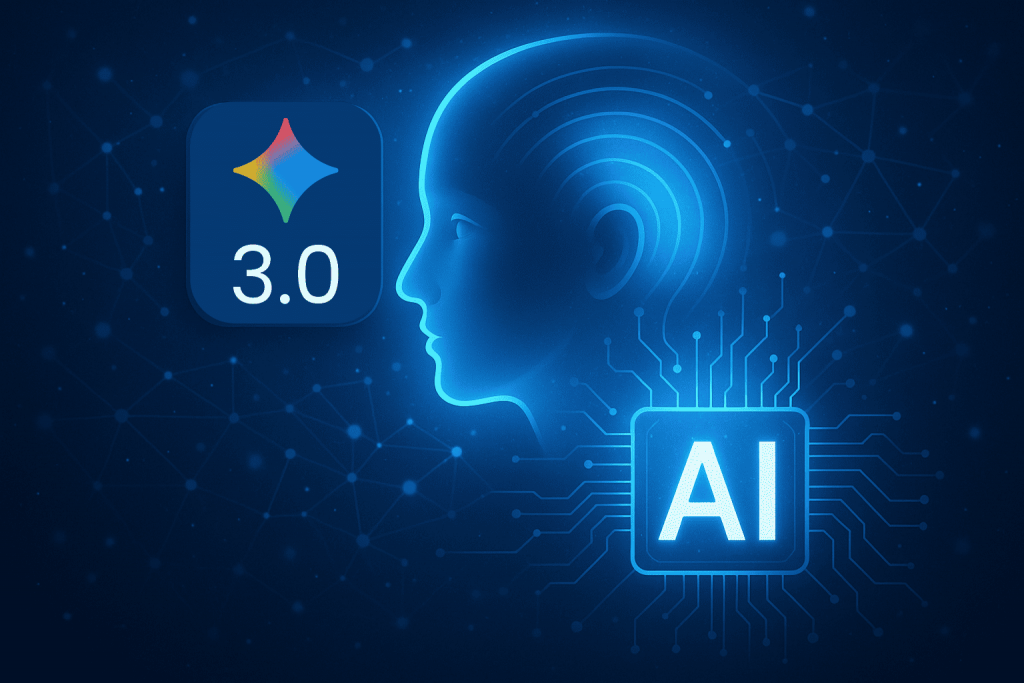
The release of Gemini 3.0 has become one of the key events in the world of artificial intelligence. If previous versions were already considered groundbreaking, the third generation of the model demonstrates a qualitatively new level of capabilities, accuracy, and adaptability. It is not only about increasing computational power, but about fundamental changes in the interaction between humans and AI. Gemini 3.0 essentially sets new standards for what a modern intelligent tool should be: fast, universal, context-aware, and as close as possible to human logic. That is why the launch of the model became an important point of transformation for the entire digital ecosystem.
How the Approach to Neural Networks Has Changed
Previous generations of language models operated mainly on the principle of predicting words based on huge volumes of textual data. Gemini 3.0 combines several types of information at once: text, images, video, audio, and structured data. This approach is called multimodality. It allows the model not just to answer questions, but to understand context much deeper — for example, analyzing video alongside textual instructions or combining a chart, a photo, and a problem description into one logical conclusion.
The model’s architecture has also undergone significant changes. Gemini 3.0 is based on an improved transformer — a type of neural network that can quickly identify important elements in information and build connections between them. Transformers use a mechanism called “attention,” which allows the model to evaluate different parts of text or images as more or less important. For the user, this means more accurate, logical, and structured responses.
A New Level of Context Understanding
One of the most noticeable achievements of Gemini 3.0 is a significantly expanded “context window.” This term refers to the amount of information a model can hold in memory simultaneously while working. The larger the context window, the better the neural network understands long texts, large dialogues, or complex interdependencies between parts of information.
In previous versions, AI often “forgot” the beginning of a conversation or lost track of a complex explanation. Gemini 3.0 can process many times more data at once, maintaining logical consistency from the start to the end of a dialogue. This opens possibilities for creating full-fledged analytical systems, smart assistants, document automation, and generating large technical texts with high accuracy.
What Will Change for Businesses and Everyday Users
Gemini 3.0 essentially erases the boundary between a “tool” and a “conversation partner.” The model can generate code, solve problems, analyze financial data, create designs, translate texts with cultural nuances, and even conduct basic research.
For businesses, this means a significant reduction in costs for routine processes. Tasks that previously required hours of specialist work can now be completed in minutes. Tech companies gain the ability to launch products and scale faster, while businesses in other fields — marketing, e-commerce, law, education — can automate data analysis, customer service, and content creation.
For everyday users, Gemini 3.0 becomes a universal assistant: from planning trips to explaining complex topics in a “human” way. Thanks to deep context understanding, the model now not only answers questions but can also consider previous experience, history of queries, and individual needs.
Impact on the Internet and the Global AI Ecosystem
The launch of Gemini 3.0 marks the beginning of a new era of competition among major AI developers. The more powerful the models become, the faster the infrastructure supporting them evolves: computing clusters, data centers, energy systems, and data exchange services. The need for security is also growing, as the models operate with increasingly large amounts of personal and corporate data.
Moreover, such models influence the development of standardized protocols, APIs, and integration tools. With Gemini 3.0, it becomes possible to launch systems that previously required complex manual work. This applies to everything — from automatic content moderation filters to intelligent chatbots capable of understanding complex legal or financial documents.
Looking Ahead: Where AI Is Heading
Gemini 3.0 is not an end point but an evolutionary step. With each generation, artificial intelligence becomes more accurate, efficient, and closer to human thinking. In the future, we can expect even deeper multimodality, increased autonomy of models, better understanding of user intentions, and integration of AI into all spheres of daily life. The next versions will likely be not just tools but full-fledged digital agents capable of independently performing tasks and offering solutions without constant human control.
The speed of AI development is changing not only technology but also our very way of interacting with information. Understanding these changes becomes critically important for users, businesses, and government systems. And it is models like Gemini 3.0 that shape the future we will use every day.
In an era of rapid AI development, it is especially important to have a reliable digital infrastructure. If you are building projects that rely on modern intelligent technologies, stable hosting and the right choice of domain are the foundation of security and scalability. That is why it is worth paying attention to RX-NAME as a reliable partner for launching and developing online projects.

Leave a Reply